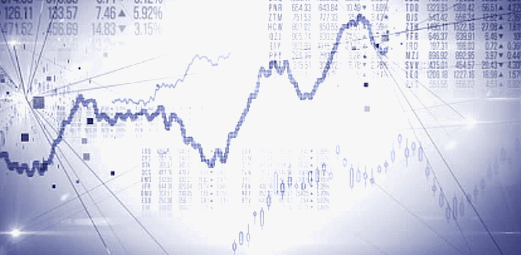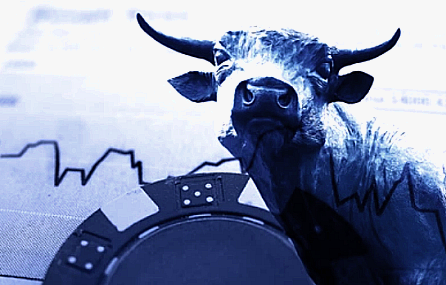Accredited InvestorsAltcoinAnatoli UnitskyAnti-Money Laundering (AML) In CryptoAPIArbitrageArtCoin TokenArticle DirectoryASICAuction Terminology GlossaryBasics of Stock Market InvestingBear MarketBest Crypto Payment Provider In the WorldBitcoinBlockchainBlockchain ConfirmationBlockchain Consensus MechanismBlockchain ForkBlockchain GlossaryBored Ape Yacht ClubBuild a Business That OutperformsBull MarketBuying SkyWay SharesByzantine Fault Tolerance (BFT) ExplainedCasascius CoinCentral Bank Digital Currency (CBDC)Centralized Crypto ExchangeCoinCoinsetCold WalletCollateralCommodity Futures Trading Commission (CFTC)Cross-Chain TechnologyCRUCrypto ExchangeCrypto GlossaryCrypto JokesCrypto Terms to KnowCrypto TickerCryptocurrencyCryptographyCryptojackingCryptounit BlockchainCryptounit GlossaryCryptounit ProgramdApp (Decentralized Application)Dead CoinDecentralized Exchange (DEX)Decentralized Finance (DeFi)Difference Between Bitcoin and EthereumDifferent Ways of Investing MoneyDigital CurrencyDistributed LedgerDo Your Own Research (DYOR)Dollar Cost Averaging (DCA)Dow Jones Industrial Average (DJIA)EncryptionERC-20ERC-721EthereumEvoScentFear Of Missing Out (FOMO)Fear, Uncertainty and Doubt (FUD)Fiat MoneyFNT Fintech CompanyGenesis BlockGlobal Unit PayGlossary of Banking TermsGlossary of Business TermsGlossary of Financial TermsHalvingHODLHot WalletHow Do I Start InvestingHow Rich is Satoshi Nakamoto?How to Create a BlockchainHow to Find Private InvestorsHow to Get Into FintechHow to Program Smart ContractsI Am Thrilled to Be a Part of This Global ProjectInitial Coin Offering (ICO)Initial Public Offering (IPO)Initial Token Offering (ITO)Innovation Basalt TechnologyInnovative Transportation TechnologiesInternational Bank Account Number (IBAN)Investing in Gold Mining StocksInvesting in Gold MiningJagerJoy of Missing Out (JOMO)Know Your Customer (KYC)LedgerLiquidity in CryptocurrencyMaker and Taker Fees in Crypto TradingMarket Capitalization (Market Cap)Meme CoinMetal Credit CardMetaMaskMillenials Now Have Access to Generational WealthMy Best Investment EverNew Digital EvolutionNFT GlossaryOff-Chain TransactionsOn-Chain TransactionsOpen Edition NFTPeer-to-Peer (P2P)Personal Loan GlossaryProbably the Best STO on the MarketProof of Stake (PoS)Real Estate Glossary of TermsReal Estate Investing GlossaryRebase TokenSecurities and Exchange Commission (SEC)Security Token ExchangesSecurity Token Offering (STO)Soulbound Decentralized Identities for Security TokensSoulbound ID Launch by Stobox Proves a SuccessSoulbound TokensStoboxStock Market GlossaryTestimonialsTether Platform and Token (USDT)UnitEx ExchangeUnitsky String TechnologiesUNTBUSDUValidatorWe Started Investing When We Were 25What are Blue Chip NFT?What are Blue Chip Stocks?What are Crypto Assets?What are Crypto Smart Contracts?What are CryptoPunks NFT?What are Digital Assets?What are Digital Collectibles?What are Gas Fees?What are Gas Wars?What are Hashmasks?What are Non Fungible Tokens?What are Non-Sufficient Funds (NSF)?What are Soulbound Tokens (SBT)?What are Stablecoins in Crypto?What are Transactions Per Second (TPS)?What are Utility NFTs?What are Utility Tokens?What Does Burning Crypto Mean?What Does Diamond Hands Mean?What Does Paper Hands Mean?What Does To The Moon Mean?What Does WAGMI Mean?What Happened to Satoshi Nakamoto?What is a 51% Attack?What is a Baby Boomer?What is a Backlink?What is a Banner?What is a Barcode?What is a Bid-Ask Spread in Crypto?What is a Block in Blockchain?What is a Block Reward?What is a Blockchain Address?What is a Blockchain Node?What is a Blockchain Oracle?What is a Blog?What is a Bond?What is a Bot?What is a Broker?What is a Business Accelerator?What is a Cash Cow?What is a Commercial Bank?What is a Commodity?What is a Con?What is a Credit?What is a Credit Limit?What is a Credit Rating?What is a Crypto Airdrop?What is a Crypto Bridge?What is a Crypto Scam?What is a Crypto Token?What is a Crypto Wallet?What is a Crypto Whale?What is a Crypto Winter?What is a Cryptocurrency Public Ledger?What is a Cryptocurrency Roadmap?What is a DAO?What is a Dark Pool?What is a Day Trader?What is a Dead Cat Bounce?What is a Default?What is a Derivative?What is a Digital Credit Card?What is a Fiscal Quarter?What is a Fungible Token?What is a Governance Token?What is a Grace Period?What is a Hard Fork?What is a Hot Wallet?What is a Hybrid Blockchain?What is a Hybrid PoW/PoS?What is a Joint Account?What is a Market Cap?What is a Merkle Tree in Blockchain?What is a Mining Farm?What is a Nonce? What is a PFP NFT?What is a POS System?What is a Prepaid Card?What is a Private Blockchain?What is a Private Key?What is a Public Blockchain?What is a Public Key?What is a Reserve Currency?What is a Ring Signature?What is a Routing Number?What is a Rug Pull in Crypto?What is a Safe Deposit Box?What is a Satoshi?What is a Security Token?What is a Seed Phrase?What is a Shitcoin?What is a Sidechain?What is a Soft Fork?What is a Spot Market?What is a State Bank?What is a SWIFT Code?What is a Tax Identification Number (TIN)?What is a Time Deposit?What is a Transaction Account?What is a Variable Interest Rate?What is a Virtual Assistant (VA)?What is a Virtual Card?What is a Virtual Currency?What is a Visa Card?What is a Whitelist in Crypto?What is a Whitepaper?What is Accounts Payable (AP)?What is AMA in Crypto?What is Amortization?What is an Accrual?What is an ACH Transfer?What is an Actuary?What is an Addendum?What is an Algorithm?What is an Angel Investor?What is an Annuity?What is an Asset?What is an ATM?What is an Atomic Swap?What is an Audit?What is an Avatar?What is an EIN?What is an Embargo?What is an Entrepreneur?What is an IDO (Initial Dex Offering)?What is an Interest Rate?What is an Internet cookie?What is an Investment Bank?What is an NFT Drop?What is an NFT Floor Price?What is an Ommer Block?What is an Orphan Block?What is an Outstanding Check?What is an Overdraft?What is Artificial Intelligence (AI)?What is B2B (Business-to-Business)?What is B2G (Business-to-Government)?What is Bartering?What is Bitcoin Dominance?What is Bitcoin Pizza Day?What is Blockchain Immutability?What is Blockchain Used For?What is BRICS?What is Business-to-Consumer (B2C)?What is C2C (Customer to Customer)?What is Capitalism?What is Catfishing?What is CFD Trading?What is Check Kiting?What is Cloud Mining?What is Communism?What is Content Marketing?What is Decentralization in Blockchain?What is DeFi in Crypto?What is Delisting?What is Depreciation?What is Digital Marketing?What is Diversification?What is Double Spending?What is Dumb Money?What is Dumping?What is Earnings Per Share (EPS)?What is Economics?What is Email Marketing?What is Equity?What is Etherscan?What is Fintech?What is Foreign currency?What is Forex?What is Fundamental Analysis (FA)?What is GameFi?What is Generative Art NFT?What is Gwei?What is Hard Currency?What is Hash Rate?What is Hashing in Blockchain?What is Inflation?What is Initial Game Offering (IGO)?What is Interest?What is Interest Income?What is Mainnet?What is Mastercard?What is Metaverse in Crypto?What is Mining in Cryptocurrency?What is Minting NFT?What is Mobile Banking?What is Money Laundering?What is NFT Alpha?What is NFT Metadata?What is NFT Rarity?What is NGMI Meaning?What is Nominal Interest Rate?What is Online Banking?What is Open-End Credit?What is OpenSea NFT Marketplace?What is Personal Identification Number (PIN)?What is Play-to-Earn?What is Polygon?What is Proof of Authority (PoA)?What is Proof of Work (PoW)?What is Public Key Cryptography?What is Pump and Dump?What is Quantum Computing?What is Refinancing?What is Retail Banking?What is Ripple?What is Sharding?What is Slippage in Crypto?What is Smart Money?What is Solvency?What is Soulbound ID?What is SSL?What is Staking in Cryptocurrency?What is Technical Analysis (TA)?What is Testnet?What is the Ask Price?What is the Better Business Bureau (BBB)?What is the Bid Price?What is the Dark Web?What is the InterPlanetary File System (IPFS)?What is the Gold Standard?What is the Lightning Network?What is the Prime Rate?What is the Sandbox?What is the Secondary Market?What is the World Bank?What is Tier 1 Capital?What is Tokenomics?What is TRC-20?What is Universal Banking?What is Unspent Transaction Output (UTXO)?What is Usury?What is Volatility in Crypto?What is Wash Trading?What is Web3?What is Whisper?What is XRP?What is Zero-Knowledge Proof (ZKP)?Who is Beeple?Who is Satoshi Nakamoto?Who is Vitalik Buterin?Why Tokenization is a Safe HavenWhy You Should Try Your Hand at Trading
Dow Jones Industrial Average (DJIA)
- Home
- Glossary of Business Terms
- Dow Jones Industrial Average (DJIA)
The Dow Jones Industrial Average (DJIA) is perhaps the most well-known stock market index in the world.

It is a barometer of the overall performance of the United States stock market and provides investors with a snapshot of how 30 of the largest and most significant companies in the country are faring.
What is the Dow Jones Industrial Average (DJIA)?
The Dow Jones Industrial Average, commonly known as DJIA or Dow 30, is a stock market index that monitors the performance of 30 publicly traded blue-chip companies on the New York Stock Exchange (NYSE) and Nasdaq. The index was established in 1896 by Charles Dow and Edward Jones, and it has since become a widely recognized barometer of the overall health of the U.S. economy.
A Brief History of the DJIA
The DJIA was created in 1896 by Charles Dow, who was a co-founder of Dow Jones & Company. Dow, who was a financial journalist, was looking for a way to measure the performance of the overall stock market. He selected 12 companies that he believed were representative of various sectors of the economy, such as railroads, utilities, and manufacturing. The index was initially called the Dow Jones Industrial Railroad Average, but it was later changed to the Dow Jones Industrial Average.
Over the years, the DJIA has evolved to include 30 large-cap stocks that are considered to be leaders in their respective industries. The companies that are included in the index are reviewed periodically by the editors of the Wall Street Journal, which is also owned by Dow Jones & Company. The editors choose the companies that are included based on a variety of factors, including their overall market capitalization, the industry they operate in, and their reputation for stability and reliability.
How is the DJIA Calculated?
The DJIA is calculated using a somewhat complicated formula that takes into account the stock prices of the 30 companies that are included in the index. The formula is designed to account for changes in the stock prices of the companies over time, so that the index accurately reflects the performance of the market.
To calculate the DJIA, the prices of the stocks that are included in the index are added together and divided by a divisor. The divisor is a number that is adjusted periodically to account for stock splits, dividends, and other changes that may affect the stock prices of the companies that are included in the index.
It's important to note that the DJIA is a price-weighted index, which means that the stocks with the highest prices have the greatest influence on the index's performance. This is different from other types of indexes, such as the S&P 500, which is a market-cap weighted index.
What Does the DJIA Represent?
The DJIA is often used as a barometer of the overall health of the U.S. stock market. When the index is rising, it is generally seen as a sign that investors are feeling optimistic about the economy and the companies that are included in the index. Conversely, when the index is falling, it can be a sign that investors are feeling pessimistic about the economy.
However, it's important to note that the DJIA is not a perfect representation of the overall stock market. As we mentioned earlier, the index only includes 30 companies, so it may not be as diverse as other indexes that include more companies. Additionally, because the DJIA is a price-weighted index, it can be heavily influenced by the stocks with the highest prices.
Despite these limitations, the DJIA remains a widely recognized and respected index. It is often used as a benchmark by investors and financial professionals, and it is frequently referenced in the media when discussing the performance of the stock market.
Understanding the Companies Included in the DJIA
As we mentioned earlier, the DJIA includes 30 large-cap companies that are leaders in their respective industries. These companies are often referred to as "blue-chip" stocks, which is a term used to describe stocks that are known for their stability and reliability.
Some of the companies that are currently included in the DJIA include Apple, Microsoft, Coca-Cola, Visa, and Procter & Gamble. These companies are spread across a range of sectors, including technology, consumer goods, finance, and healthcare.
Investors who are interested in investing in the companies that are included in the DJIA can do so by purchasing shares of exchange-traded funds (ETFs) that track the index. These ETFs provide investors with exposure to a diversified portfolio of blue-chip stocks, which can be a good way to achieve broad-based exposure to the stock market.
The Impact of the DJIA on the Economy
The DJIA is often used as a gauge of the overall health of the U.S. economy. When the index is rising, it is generally seen as a sign that the economy is growing and that businesses are performing well. This can lead to increased confidence among consumers and investors, which can further drive economic growth.
Conversely, when the DJIA is falling, it can be a sign that the economy is slowing down or that there are concerns about the performance of the companies that are included in the index. This can lead to a decrease in consumer and investor confidence, which can further exacerbate economic problems.
It's important to note, however, that the DJIA is just one of many indicators that are used to gauge the health of the U.S. economy. Other indicators, such as GDP, inflation, and unemployment, also play an important role in understanding the overall health of the economy.
The Flaws of the DJIA as an Indicator of the US Economy
The Dow Jones Industrial Average (DJIA) has been widely used as a measure of the US economy since its inception over a century ago. However, many critics have argued that the index has significant limitations that make it an imperfect gauge of the overall economic health of the country.
One of the primary criticisms of the DJIA is its narrow focus on just 30 large-cap US companies. Critics argue that this number is too small to provide an accurate representation of the economy as a whole and neglects the performance of companies of varying sizes. In contrast, the S&P 500 index, which includes 500 large-cap US companies, is often seen as a more representative indicator of the broader economy.
Another limitation of the DJIA is its reliance on stock prices alone in its calculation. Critics argue that this approach does not accurately reflect a company's true value. Instead, they propose that market capitalization, which takes into account both the stock price and the number of shares outstanding, would be a more appropriate measure of a company's overall worth. By not factoring in market capitalization, a higher-priced stock with a smaller market cap would have more weight in the DJIA than a lower-priced stock with a larger market cap. This leads to an inaccurate representation of the size and importance of a company.
Additionally, the DJIA is a price-weighted index, which means that stocks with higher prices have a greater influence on the index. This method contrasts with market capitalization-weighted indexes that assign weight based on a company's market value. Therefore, a smaller company with a higher stock price would have a greater impact on the index than a larger company with a lower stock price, even though the latter has a much larger market cap. This can lead to an inaccurate representation of the true size and importance of companies. Furthermore, stock splits, which have no effect on a company's underlying value, can impact the DJIA, whereas, in a market cap-weighted index, they would not.
In conclusion, while the DJIA has been a popular indicator of the US economy for over a century, it has limitations that cannot be overlooked. The index's narrow focus, reliance on stock prices alone, and price-weighted methodology all contribute to an inaccurate representation of the broader economy. As such, investors should be mindful of these limitations when using the DJIA as a measure of the overall health of the US economy and should consider alternative indices such as the S&P 500 that may provide a more comprehensive view.
The Future of the DJIA
The DJIA has been around for more than a century, and it has evolved significantly over that time. However, there are some who believe that the index may not be as relevant as it once was, given the changes that have taken place in the stock market in recent years.
For example, the rise of technology companies has led to a significant shift in the composition of the stock market. Many of the companies that are now considered to be leaders in their respective industries did not even exist when the DJIA was first created. Additionally, the increasing popularity of passive investing and index funds has led to a greater focus on broader-based indexes, such as the S&P 500.
Despite these challenges, the DJIA remains a widely recognized and respected index. It is likely that the index will continue to evolve over time, in response to changes in the stock market and the economy.
The Bottom Line
The Dow Jones Industrial Average is one of the most widely recognized stock market indexes in the world. It provides investors with a snapshot of how 30 of the largest and most significant companies in the United States are faring. The DJIA has been around for more than a century, and it has evolved significantly over that time.
However, it remains an important gauge of the overall health of the U.S. stock market and the economy. As investors look to the future, it will be interesting to see how the DJIA continues to evolve and adapt to the changing landscape of the stock market.
Related Articles

Basics of Stock Market Investing
Fundamental analysis includes studying everything that can affect the value of the stock, such as the state of the economy, industry conditions and the effectiveness of the company's management.

What are Blue Chip Stocks?
These stocks are typically included in the most reputable market indexes or averages, such as the Dow Jones Industrial Average, S&P 500, Nasdaq-100, TSX-60, or FTSE Index.

What is Smart Money?
In the stock market, smart money investors are individuals or institutions who have a deep understanding of the market's underlying fundamentals and trends.
- Home
- Glossary of Business Terms
- Dow Jones Industrial Average (DJIA)